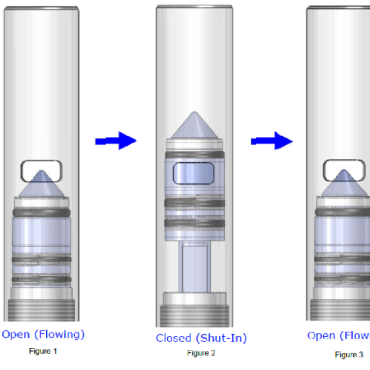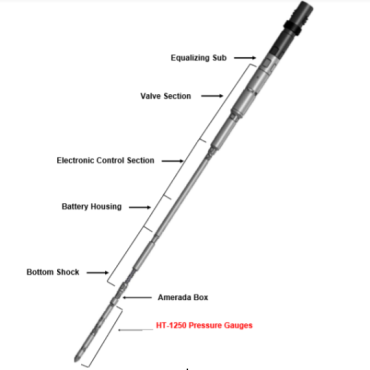Downhole Shut-in Tool
Benefits
- The Smart Shut-In Tool (SST) utilizes multi-cycle options, to allow the user to perform multiple cycles when using our Downhole Shut-In Tools for different types of tests.
- We also incorporate multiple seals to virtually reduce any leakage. Our Flow area is larger than the inner diameter of the lock the Multi-Cycle Downhole Shut- In Tool is connected, in order to prevent our tool from being a choke.
- Innovative flow passages are designed to optimize flow, virtually eliminating the "choke" effect.
- All Stainless-Steel construction for maximum corrosive resistance and durability Fast closing time - less than 60 seconds
- Internal test firmware delivers audible signal and valve movement to confirm proper operation prior to use downhole
- Switch selectable shut and open sequences without using a computer.
- Custom computer programming with up to 20 steps for test
- Mechanical Equalizer Provided
- Shock Reducing and Centralizing Hardware


Downhole Shut-in Tool
The Downhole Shut-In Tool (DHSIT or SST) is an electromechanical tool that allows the user to shut-in a well in the wellbore. Shutting a well in the wellbore, typically above the perforations, helps reduce the effect due to wellbore storage. This allows the user to capture pertinent virgin information as to how the well is performing. The data captured via Downhole Memory Pressure gauges can provide accurate characterization of a well. Downhole shut-in during production of a well provides transient data analysis and reservoir characterization.
The Downhole Electronic Shut-In Tool Systems automatically shuts-in your well near the sand face or perforations, removing wellbore storage effects that can reduce data quality while minimizing costly production downtimes.
Operational Process
- Tool runs in the Hole open (Figure 1)
- After X time (programmed from computer or selectable knob setting), the valve will close, shutting off the well (Figure 2)
- After Y time (programmed from computer or selectable knob setting), the valve opens allowing the well to flow again (Figure 3)
